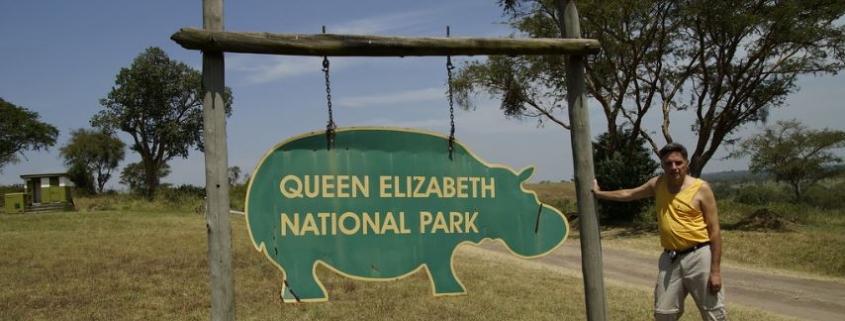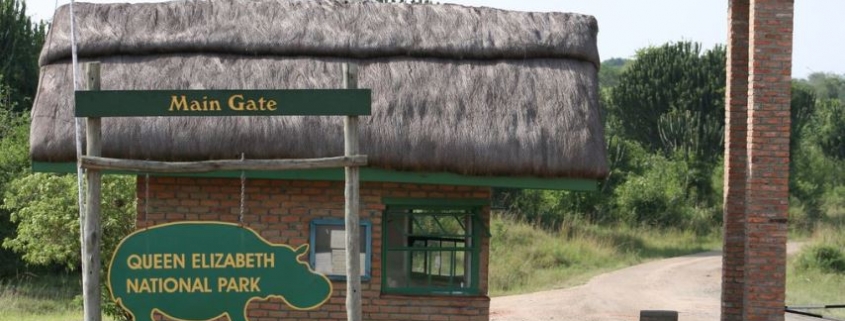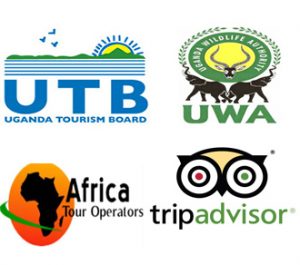Queen elizabeth national park gates
Queen elizabeth national park gates : Queen Elizabeth national park is one of the oldest national parks and protected areas in Uganda established in 1952 and initially named as kazinga national park, the park’s name was changed to Queen Elizabeth national park in commemoration of the visit of Queen Elizabeth II of Great Britain. Queen Elizabeth national park lies on the floor of Africa’s western rift valley covering an area of 1,978 square kilometers, the park also lies in the shadow of mountain Rwenzori “mountain of the moon” and stretches through areas of Kasese, Kamwenge, Rubirizi, and Rukungiri districts.
Queen Elizabeth national park is listed as a world biosphere reserve primarily because it’s diverse ecosystems such ass lakes, wetlands, savannah grasslands, shady and humid forests, the park is made up of various sectors such as kazinga channel, ishasha southern sector, Mweya peninsula, kyambura gorge, Maramagambo forest. These sector are habitants for a huge population of wildlife in the park that is mammals and birds. Animals habiting in Queen Elizabeth national park are over 76 species and they include Elephants, Lions, Buffaloes, Leopards, warthog, giant forest hog, topi, bushbuck, civet, hyena, aardvark, Uganda kob, bushbabys, chimpanzee, baboon, Columbus monkeys, hippopotamus and many more.
the park is also an important birding site with over 600 bird species such as kingfisher, black bee-eaters, Shoebill storks, White-winged Warbler, White-winged Terns, White-tailed Lark, White-faced Whistling, White and Abdim’s Storks, Whalberg’s Eagle, Water Thick-knee, Verreaux’s Eagle Owl, Swamp Fly-catcher, Spur-winged and African Wattled Plovers, Spotted Redshank, Slender-tailed Mourning Dove, Slender-billed, shoebill stork, Sedge warbles, Saddle-billed Storks, Ringed Plover, Red-chested Sunbirds, Pin-tailed Whydah, pink-backed pelican, Papyrus Gonolek, Papyrus canary, Open-billed Stork, Northern Pochard, Martial Eagle, Malachite and Pied Kingfishers, Little Stint, Lesser Masked Weavers, Lesser and Greater Flamingo, Knob-billed Ducks, Jack Snipe, Grey-headed Kingfishers, Grey-headed Gull, Grey-capped Warbler, Grey Kestrel, Great-white and Pink-backed Pelicans, Greater Swamp and winged Warblers, Great white and Pink-backed Pelicans, Great and Long-tailed Cormorants, Gabon and Slender-tailed Nightjars, Eurasian Wigeon, Curlew Sandpipers, Corncrake, Common Teal, Common Squacco Heron, Common Snipe, common sand Martins, common Greenshank, Collard Pranticles, Chapin’s flycatcher, Brown Snake Eagle and many more.
When travelling to Queen Elizabeth national park for a safari, the park is accessed using various entrance gates which are situated on different regions of the park. Gates used to enter the park include
Katunguru entrance gate
Katunguru gate is one of the entry gates to Queen Elizabeth national park situated in the northern region of the park, geographically the gate is found in the south western Uganda in kasese distance. Katunguru gate is at a distance of 115.5 kilometers a drive of 2 hours and 30 minutes from fort portal, 382 kilometers from Kampala and 40 kilometers a drive of 36-40 minutes from kasese.
Katunguru gate is just adjacent to Rutanda and it is the main entry to the gorgeous mweya peninsula and used by tourists going to Mweya safari lodge and those beginning their touring in mweya peninsular. Mweya peninsular is one of the most attractive regions in Queen Elizabeth national park, mweya peninsular is situated on the northern bank of kazinga channel another magnificent in the park which joins Lake Edward to Lake George. From the raised plateau of mweya peninsular it is an opportunity to sight amazing sights of kazinga channel with its animals, the magnificent surrounding filled with a ray of vegetation. Using Katunguru gate to get to Queen Elizabeth national park leads you to the heart of the park, on your way you are blessed with sights of mountain Rwenzori peaks and it is the main the main entrance gate to Mweya safari lodge. Mweya safari lodge is one of the most luxury lodges in Queen Elizabeth national park situated at Mweya peninsula overlooking the kazinga channel.
Ishasha entrance gate
Ishasha gate of Queen Elizabeth national park is used most by tourists intending to visit the ishasha southern sector of the park, ishasha sector is the most visited section of Queen Elizabeth national park to experience the tree climbing lions and other animals like antelopes, buffaloes, Uganda kob, impalas, waterbucks, warthog and many more.
Ishasha gate is the second popular entrance gate of Queen Elizabeth national park following Katunguru situated in mweya peninsula gate, the gate is situated in the magnificent landscape which is dominated by beautiful savannah woodland tree species such as huge fig trees, cactus trees, acacia and many more which are resting places for the tree climbing lions. Ishasha gate is situated in a 2 hours’ drive from the Mweya peninsular for the tourists staying at mweya safari lodge, the gate can also be used by tourists connecting from Queen Elizabeth national park to Bwindi impenetrable national park for a safari.

Kabatoro entrance gate
Kabatoro entrance gate is the main entrance gate to Queen Elizabeth national park situated in the north western region of the park, Kabatoro entrance gate is used mostly by tourists visiting Kabatoro community, Katwe salt lake and Lake Munyanyange for cultural encounters, birding and sighting traditional salt mining.
Crater entrance gate
Crater entrance gate is in the north eastern part of Queen Elizabeth national park, crater entrance gate is situated close to the equator markers and mbarara- fort portal highway which means it is very accessible by tourists from mbarara and fort portal.
These gates are always open to be used by tourists to get into the park for a safari experience, when using these gates expect to go through all security formalities and pay all the necessary park fees.





Leave a Reply
Want to join the discussion?Feel free to contribute!